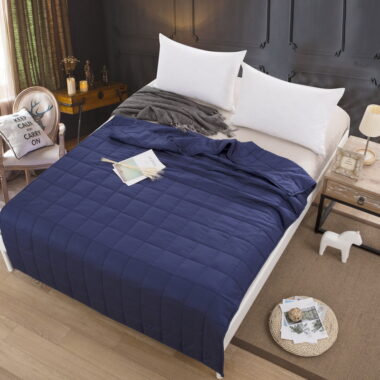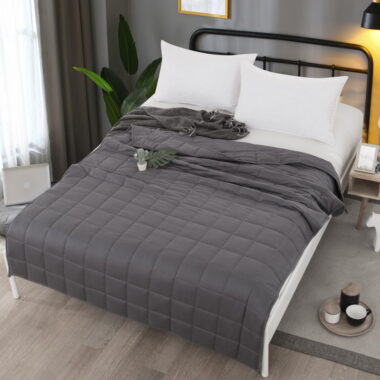Pricing is one of the most important considerations for any wholesale buyer. For blankets, the unit cost depends on a wide range of factors—from raw materials and production methods to logistics and packaging. Understanding these elements is critical to negotiating better prices and ensuring long-term profitability. In this article, we’ll explain the main factors behind blanket pricing, using a case study to show how one international buyer successfully managed costs while maintaining quality.
Case Study: A European Retailer’s Challenge
A mid-sized retailer in Europe planned to import 20,000 fleece and mink blankets for its winter sales. While the company had secured a blanket supplier in Asia, the initial quotation was higher than expected. The buyer’s main challenge was balancing price with quality, ensuring the blankets met consumer expectations without exceeding budget. Working closely with the blanket factory, the buyer was able to adjust several factors to reduce overall costs by nearly 15%.
◆ Factor 1: Material Selection
Material choice has the biggest impact on blanket pricing.
-
Wool and cashmere are premium options, but expensive.
-
Fleece and polyester are more affordable, with flexible customization.
-
Mink-style acrylic offers mid-range cost with a luxurious appearance.
In our case study, the buyer originally requested 350 GSM fleece. After discussion, they shifted to 300 GSM for everyday retail while keeping 350 GSM only for premium lines. This adjustment lowered fabric cost by 8% without sacrificing perceived quality.
◆ Factor 2: Order Volume and MOQ
The larger the order, the lower the unit cost. Blanket factories optimize production when machines run continuously, and bulk orders reduce waste. The buyer increased the order size for two colorways instead of splitting into four different shades. This helped the factory consolidate dyeing and cutting, reducing labor and material waste. As a result, the supplier offered a more competitive price per unit.
◆ Factor 3: Customization and Design
Customization adds value but can increase costs. Printing, embroidery, and special edging require extra time and materials. The European retailer initially planned to add complex embroidery to all blankets. After analysis, they limited embroidery to gift sets and high-end SKUs, while keeping standard lines with simpler designs. This cut decoration costs by nearly 20% while still offering variety in the product line.
◆ Factor 4: Packaging Options
Packaging is often overlooked in blanket cost control. Retail-ready boxes, woven bags, or custom-printed cartons can add up quickly in bulk orders. In the case study, the buyer switched from heavy printed boxes to eco-friendly polybags with branded tags. Not only did this reduce cost by 6%, but it also appealed to environmentally conscious customers, strengthening brand image.
◆ Factor 5: Logistics and Shipping
Freight costs can account for a significant percentage of total expenses. Sea freight is economical but slow, while air freight is faster but expensive. The buyer avoided mixed shipping by planning well in advance, consolidating containers to reduce cost. They also worked with the supplier’s logistics team to optimize carton sizes, increasing container loading efficiency by 12%. These steps significantly lowered the landed cost per blanket.
◆ Factor 6: Payment Terms and Currency
Payment terms can indirectly influence cost control. Factories may offer better pricing for buyers who provide larger deposits or faster payments. Currency fluctuations also play a role—locking in a price in USD helped the European buyer avoid unexpected increases. By negotiating slightly better payment terms, the buyer secured an additional discount from the supplier.
Lessons Learned from the Case
This case highlights several key lessons for wholesale blanket buyers:
-
Material adjustment can reduce costs without losing value.
-
Consolidated orders improve factory efficiency.
-
Selective customization balances variety with affordability.
-
Packaging optimization saves cost and supports branding.
-
Smart logistics planning reduces freight charges.
-
Negotiating payment terms adds small but meaningful savings.
Together, these measures gave the buyer a 15% reduction in cost per unit while keeping the blankets attractive to customers.
Conclusion
Wholesale blanket pricing is shaped by multiple factors, including material, order volume, customization, packaging, logistics, and payment terms. Buyers who understand these elements and work closely with a blanket factory can achieve better cost control. The case study shows that small adjustments at each stage—whether reducing GSM, simplifying design, or consolidating orders—can result in significant savings. For international buyers, choosing the right supplier and maintaining open communication are the best strategies to secure both affordability and quality.








